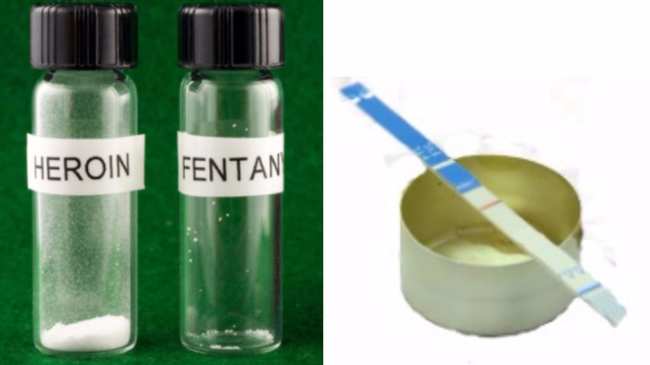
I remember that there were moral value classes in my school and it was decided that we would be taught Bhagwad Geeta to instill certain ethics in us, which would be beneficial in the long run. I would like to share the same here before we come to the main point. So there was a time when Lord Krishna told Arjun, who was supposed to fight for his territory, that he would be killed by his fears before he would even start fighting the war! So he was asked to gather all his strength and fight with full might- first with his fear and then with the opponent army.
The reason I have brought this point here is that fear indeed is the biggest enemy of human beings and most of the times we lose our life's battles because of that. Now you must be thinking, how is it related to addiction?
Let us start connecting it with a few examples related to an addict's life.
1. Sam is a weed addict, who has planned a trip to Goa. He plans to be there for 3 days and collects his substance according a week before he leaves. He scores 3 grams more than what he generally scores. Why?
2. Mike is a heroin addict. He is left with money just enough to reach college. He knows that he would not be given his pocket money before the new month starts. There are still 2 days left for that. He chases all his left stuff in one go, due to anxiety. Why?
3. There is an order from the court- No more cigarettes to be sold. Matt collects 100 boxes from different shops. Why?
Answer to all the questions remains the same and that is FEAR. Sam is scared, what if his weed gets over before his trip ends. Mike is scared, how would he sustain those two days and what if he does not get the money to buy more? Matt is scared, what if he won't get his next stick of cigarette?
There are various fears that an addict holds. It is not just related to his substance, but various situations that he encounters in his life. And these fears might even display paradoxes like existence of fear of change and fear of constancy or no change! Fear of others and before that fear of oneself! Fear of non conformity in peer group and fear of relapse at the same time! So we can say that fear indeed is a powerful motivator. It can make any human do anything, rather it brings people in a Do Or Die situation.
Power to Make Your Fears Come True Can Be Used As The Power To Make Positive Assertions Come True Too
I have often heard this from people "Whatever you fear, it would definitely come true. But if you think of something positive, it might not come to pass." It is a myth. It is all in your mind. If you have the energy to get your fears manifested into reality, then you can utilize the same amount of energy in getting positive things created.
Connecting it with addicts, they always have this fear that their trepidations are going to strike them hard in reality. They want to escape them.
We all work as per our convenience. So when an addict wants to take his substance, he would think of various alibis. He would speak about his bad experiences in life. But what about the 'Bad Trips' of drugs that he had? Would he ever say that I don't want to do drugs anymore because I vomited and lost my senses after I took it? But yes, he would definitely say that I don't want to feel happy without drugs, because if I do, I will lose my reason of happiness!
School of thought of Humanistic Existentialism says that we all have a purpose to live. There is nothing that humans do without a reason. Addicts consider all the negative reasons to live. They choose to keep themselves scared of happiness and joy without drugs.
What Needs To Be Actually Done Instead Of Fearing Situations
Recognition of Thoughts- reckon what exactly your thoughts and feelings are.
Gain Control Over Them- after you know accept your thoughts and feelings, you control them. It is your mind, so do not let it control you, but you control it.
Reason Them Out- since there would be various thoughts at a time, so you need to reason out with your understanding what their implication on your life could be or has been.
Look at the Practicality of Solutions Your Mind Gives- once you have seen what repercussions you have faced because of your actions, you must introspect with consequential thinking and give your thoughts a reality check to see the possibility of putting them down into practice.
In case of a Positive Response from the Mind, Get it into Reality- finally, if you think that there is something positive that you can practice, you must just do it.
We know that it is not that easy to change that fearful streak. But you have perfected your fear through constant practice, you can perfect confidence and taking the right decisions through practice too. You or your loved ones need rehabilitation if you think that there are too many fears bothering your or their mind and you or they are unable to quit using any psychoactive substance.
Try it at least. And see how well it works. You know, there is always light at the tunnel end.
Shafa Home is country's premier organization for treatment of alcohol/drug problems, de-addiction, rehabilitation, counseling. They treat both males and females for their addiction, psychiatric and behavioural problems like gambling, compulsive theft, aggression, obsessive compulsive disorder etc, using Therapeutic Community as their way of treatment. You can logon to their website http://www.shafahome.org for more information.
Article Source: https://EzineArticles.com/expert/Bhavya_Nagori_Sharma/2518708
Article Source: http://EzineArticles.com/9891193







 BOSTON—As Scott Strode walked through the maze of South Boston traffic islands and warehouses near his newest gym, he pointed down to a discarded syringe on the ground.
BOSTON—As Scott Strode walked through the maze of South Boston traffic islands and warehouses near his newest gym, he pointed down to a discarded syringe on the ground.
